See our Ultimate Dashcam Guide for the latest reviews, tips, and new installation advice.
THIS 2015 ARTICLE IS HISTORICAL AND OUT OF DATE!
A dashcam is a fairly easy installation, as it only requires power and mounting on the windshield. For the Tesla owners, BlackVue dashcams seem to be the most popular, with an advanced design that includes wide-angle 1080P HD recording, WiFi, GPS, shock detection, voice, and LED indicators, and removable micro-SD card memory. They also have free apps for Windows, iOS, and Android. They offer both a front camera DR600GW-HD and a version with front and rear cameras such as the DR650S-2CH.
Also, consider the highly rated Thinkware F770 with the rear camera. It’s a little larger than the BlackVue but provides more controls while in the car and the rear camera is 1080p vs 720p on the BlackVue. The SpyTec A119 is another worthy consideration with 1440p and a much lower price. More details on each are available in our Ultimate Dashcam Guide.
Dash Cam installation should take about 1-2 hours depending on the power connection method and how handy you are.
We’ll show the installation of the BlackVue DR500 front dashcam (below), now superseded with the similar-looking DR600/650.
First, locate where you want it installed on the windshield. For the Model S, a good placement is behind the mirror out of view of the driver (pre-auto-pilot cars). For newer cars, you may want to place it on the passenger side of the mirror. In the Model X, just below the mirror box is a good location. Be sure the lens has an unobstructed view (i.e. not going through the black dots of the windshield). The adhesive mounting provided with the dashcam is quite strong and after several years of cold and hot sun, has not weakened.
We think it is best to have the dashcam powered on 24/7, as it can record someone hitting the car while parked or other events of interest when you’re not in the car. The power drain is minimal, about 3W (250 mA). If you only use battery power, this will drain about 1 mile of range every 4 days. BlackVue makes an accessory Power Magic Pro prevent the dashcam from running down the battery. It is not needed in the Tesla, but some packages include it.
There are at least five popular ways to connect the dashcam to power:
1) Just plug into the 12V power receptacle under the center armrests. While quick and easy, you still have the cord, and when the car powers off, the camera goes dark. You might use this method as a test to be sure the dashcam is working before you hard-wire in the dashcam.
2) Most Model S cars have an unused power connection conveniently available behind the microphone panel, although it has been reported that pre-AP cars without the Tech Package do not have this connector. Model X does NOT have always-on power available in the mirror, so look at the next few methods after this.
The Model S grate resides between the front reading lights above the rear-view mirror. To remove the panel pull down from the edge facing the back of the car. Two snaps hold it in place. If you have this black connector, it is unconnected and has three wires. You’ll tap into the black (ground) and the red with blue stripe wire (+12VDC). Some owners have reported not seeing the connector, but we believe it is available on all cars. We’ve confirmed it on different 2013 and 2015 vehicles. It is usually taped on the microphone panel with yellow or blue tape. The two attached gray connectors are for the microphones and do not have power. The unused black connector has power on all the time, even when the car is powered off. You can feed the power line through the headliner into this area. See note below about the BlackVue power connection.
3) Connect the power to the fuse box in the Frunk. You’ll route the wire under the headliner and down the passenger side pillar and around the door and into the frunk area, where it connects to the fuse box. This is almost the identical routing we used for the parking assist display, in which the wire travels the same route. See the section Installing the display and routing the wire to the front of the car for all the details and pictures. Once the wire is in the frunk, you’ll route it over to the fuse box. See note below about the BlackVue power connection.
4) As an alternative to 3, you could route the wire through the firewall. This is a lot of work, but if you’re interested, see Part 2: Running Wires Through the Firewall in our Sub-woofer amplifier installation. This requires a lot of dexterity and time. The rubber grommet we go through may also be filled with the pano roof drain line, so pano roof equipped cars will be even harder. Norman Hirsch installed his dashcam and has additional instructions for making a hole through the firewall as his car has the pano roof. See the details here.
5) Connect power to the OBDII port (under the dash, driver side). This is fused to 5 amps, and power is always on. You can buy a connector with power leads like NOCO Genius GC012 OBDII Connector for about $16. Even easier is using this ODBII to socket cable for about $20 including shipping to the USA from Germany. See the note below about the BlackVue power connection.
NOTE: If you’re using the BlackVue dashcam, the 12V power connector has voltage reduction circuitry on older models, so you can’t just clip it off and wire the dashcam directly to 12V. You need to keep the large cigarette connector. We used a receptacle with wire leads to solve this such as Female Car Cigarette Lighter Socket, If you got the Power Magic Pro option, it includes a socket (but we don’t recommend installing the Power Magic, it may turn off your dashcam when parked). You may want to buy the BlackVue hardwire kit, which eliminates the bulky 12v power connector.
For methods 3 and 4, using the wires from the Female Car Cigarette Lighter Socket, connect the ground (usually black) wire to the large bolt on the cross member. I did this with a ring lug.
I took a gray 2 amp fuse and soldered the 12v wire from the socket to one side of the fuse. See the image of where to stick the fuse for continuous power, Fuse Box 2, slot F54. In my case, the socket I used had two black wires, but most sockets come with a red wire for 12V. Be sure to use the 12V powered wire that goes to the center of the socket.
For older cars, slot F54 is unused on earlier cars and has no actual connection on the windshield side of this slot, so the extra width of the wire is not a problem. The soldered side of the fuse must go towards the windshield. I filed a slot in the side of the cover near this fuse so the wire would not be pinched when the cover is closed. As an alternative to soldering a wire to the fuse, you could use a product like Add-A-Circuit Fuse Holder. If you have the Subzero weather package F54 is used for the Wiper De-icer. It is still a good position to use, but you’ll have to use the Add-A-Circuit fuse holder.
When you connect power to the dashcam, it takes a few seconds to initialize and an audio announcement will indicate when it is powered up and running. The BlackVue has many settings that you can change using one of the free applications. For example, it has a security indicator in the front. I prefer to keep this off, to avoid unwanted attention.
The Tesla dashcam video thread has a group of videos that may be of interest or add yours to the list!
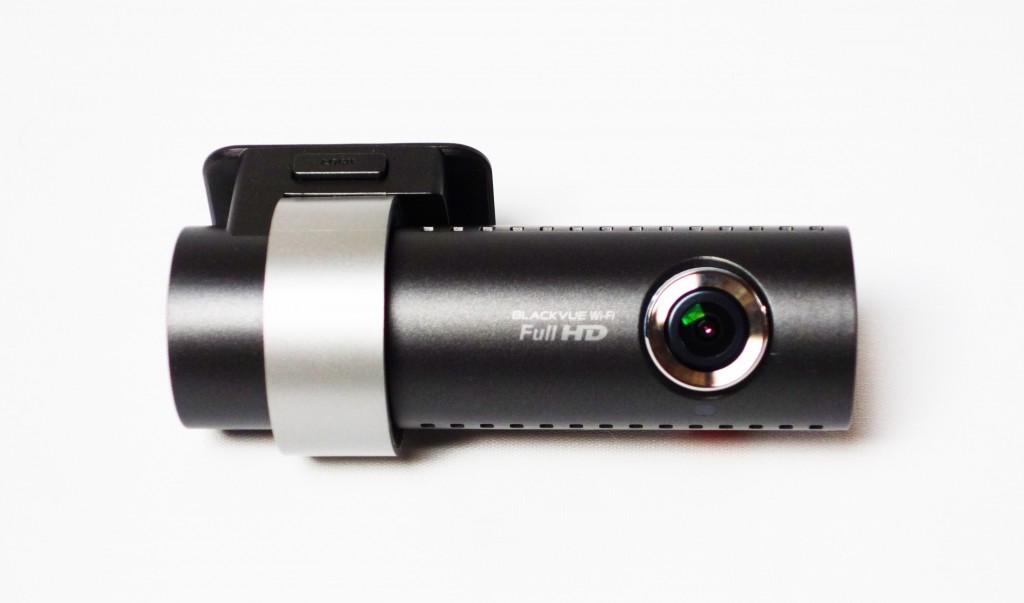
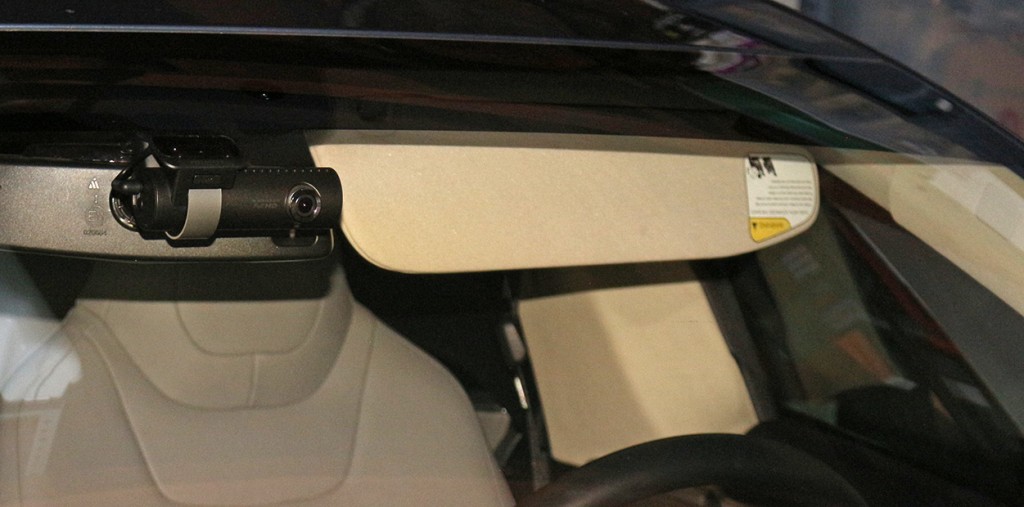
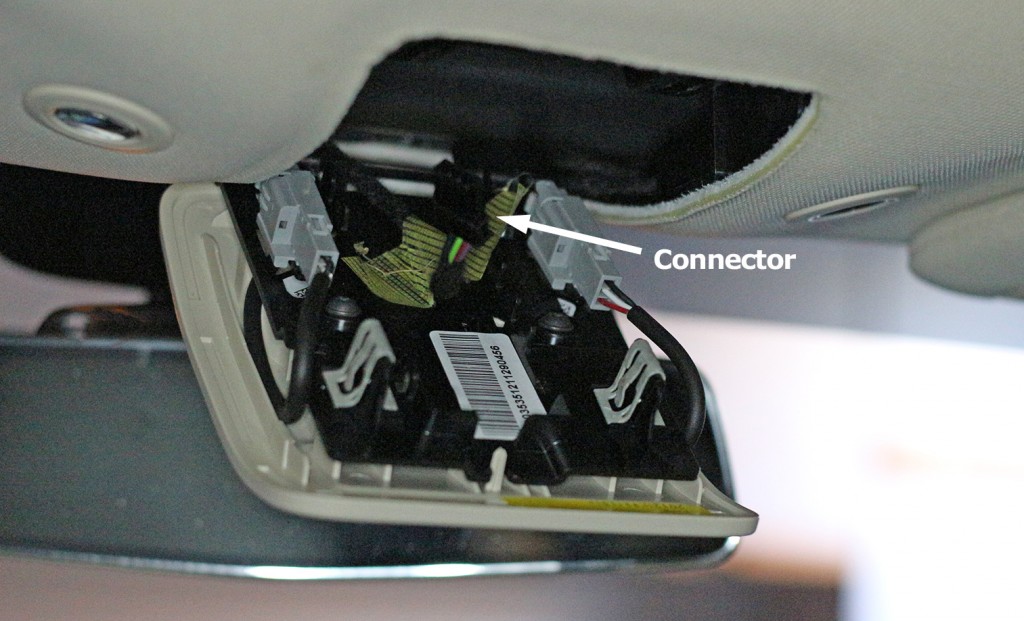
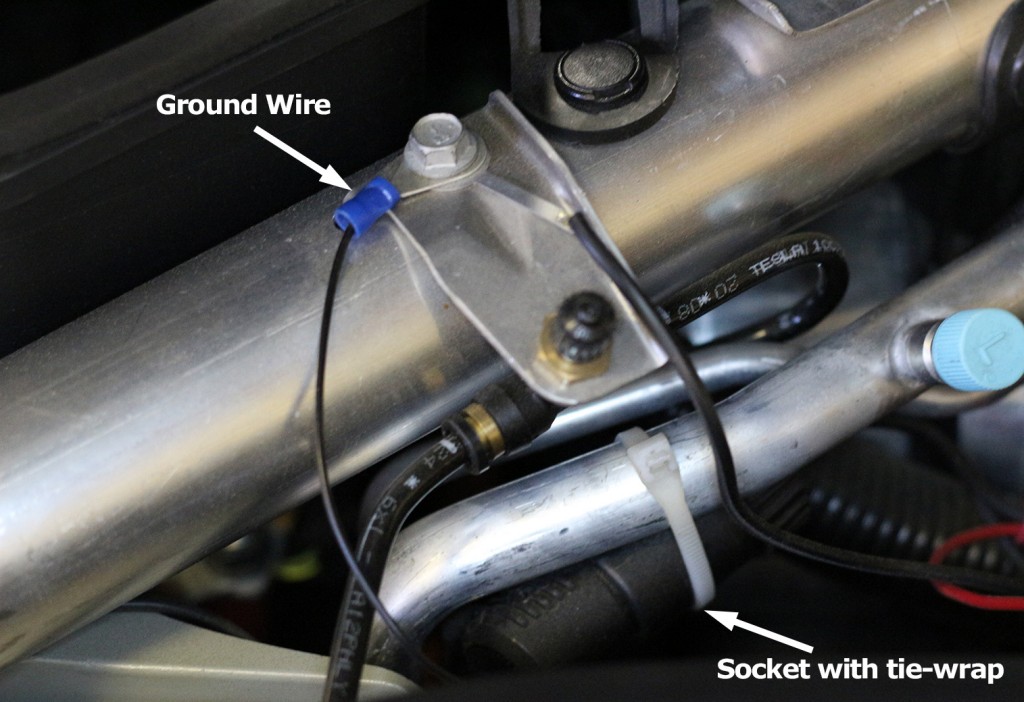
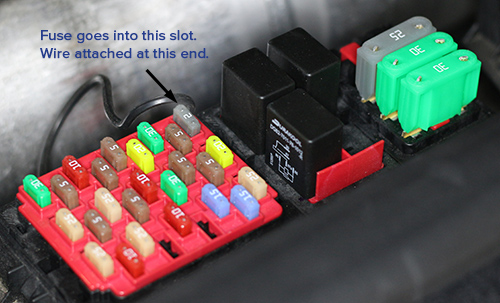
25 comments
Thanks, I decided to locate the fuse box and apparently since I have a late 2015 (11/15) production date, the fuse box locations are not the same as the older 2015’s and prior years which stumped me a bit since I looked at the images from the site I sent in my previous comment. Needless to say I found the updated fuse box diagram here https://www.youtube.com/watch?v=aH0aM0JLIIU and found it to be #F100 which is labeled “Siren and Intrusion Module”. Sure enough the fuse was blown and now I am on my way getting 12 volt on the pins and wiring up the dashcam. Woohoo!!
Again thanks for the help. Much appreciated!
Glad you dug into it further!
Me again, is the fuse for the alarm or siren? I did what you suggested and unlocked the door from the inside while the car was armed and the horns went off beeping. There was no siren however. According to the fuse box diagram https://fuse-box.info/tesla/tesla-model-s-2013-2016-fuses #50 is labeled a siren. Could you confirm?
Just the horn. There is no siren. The alarm going off means the circuit has power. Sounds like you don’t have power available in the headliner. Another option is to connect down to the ODB-II port. It also has always-on power. I think there are connectors available that pull the 12v from ODB-II
Hi, thanks for this article which is very helpful! Just bought a used 2015 Model S 90D . I see the microphone panel and pull out the appropriate connector, but tried to read 12 volts from the gray and black wire, however I am getting nothing. I do get 10 volts from the red/green wire but understand this is not enough. I understand during 2015/2016 it was a mixed bag whether this constant power would be available, but if i have the connector, should it work? Perhaps the fuse is blown? Have you heard of other vehicles having the wires but not showing 12 volts? Or is it mainly not having the connector at all? Thanks!
You are looking at the black 4-pin connector? The two gray connectors are for the microphones and have no useful voltages. Ok, the red/green is a data wire, and can’t be used to draw power. It is possible the fuse might be blown, but it also controls the alarm, so you could roll a window down, lock the car and move the fob away from the car. Reach in and open the door from the inside. If the alarm sounds, the fuse is not blown. I’ve not heard of any case of those cars with the black connector not having power. On the connector, with 3 wires, 12v power should be on the outside two wires.
Hi all,
does anyone know the exact connector that is behind the grill in the headliner? it’s that small black connector, looks to be some sort of molex 4 port connector. if anyone knows the part number or even the type, it would be awsome.
i want to make a mating connector and wire to that plug to power a radar detector…
thanks,
peter
I wrote up all the connections and connector part numbers here: https://teslatap.com/modifications/dashcam-power-cable/ It was for a dashcam, but will work for any purpose.
holy crap! that’s exactly what I was looking for. thanks!!! you rock!
peter
If you plan to connect to the continuous v12 (power from behind the mirror) look for a dashcam that has option to turn off loop recording and enable motion detection. I’ve tried the ROAV C1 it doesn’t have option to turn off loop recording.
ApeMan does have option to turn off loop recording.
I haven’t looked at BlackVue.
Good advice. Most of the better dashcams, such as any BlackVue, do automatic parked detection and switches to motion detection when parked.
Hello Tesla Tap
It’s no longer available the ebay kit to get 12v from intrusion module from ebay?
And then, what should be the Amp for the inline fuse for my Blackvue 590 2ch?
Keep the good job! Thank you from Barcelona!
Sorry, I ran out of parts for the kits. Not sure I’ll make more although getting quite a few requests. I’d use a 2 amp fuse. The dashcam should take under 500 mA, so even a 1 amp fuse should work.
Model S from March 2018 has different voltages on these wires. Has anyone figured out what is exactly the way to power dashcams for those cars? I measure 14 V between green with black stripe and red with black stripe.
Use the black wire for negative and the red with blue stripe for positive. 14V is normal, but everyone calls it 12v for simplicity (all cars typically run between 12-14v). Do not use the light green stripe wire – it is the LIN bus and will cause all sorts of problems if you use it. More pictures and instructions are available here: https://teslatap.com/articles/ultimate-tesla-dashcam-guide/ under Power connections.
Thanks, but using the power there hasn’t proven to be successful. When I use it, the voltage level drops to ~5 V.
Apparently this is the best solution https://teslamotorsclub.com/tmc/threads/12v-constant-in-rear-trunk.72868/ Run the power cable along the cable for the rear camera to the trunk and connect it to 12 V (14 V) over there.
Too bad. Not sure if they removed the intrusion module power connection in 2018 cars, or it’s just your car. Since the power/connector is not used by Tesla, except in Europe, I doubt it is tested in US cars.
The TMC thread suggests the same location as I describe for the rear hatch module in my text above, which has continuous 12v.
New OEM Tesla integrated dash cam to be introduced into the EU market. Snap off the toe of the internal mirror stand, connect to internal power contact and snap-on the camera. (Moderator: See Topfit Customized Car Dash Cam)
How sure are you about the 12V-power reduction in the lighter plug ?
The camera input power marking says 12-24V ! To me that indicates that
the camera it self can regulate the input power. (?!?)
This was true on the 500 series (voltage reduction was done inside the plug). I don’t know for 100% on the newer 600/650 models, but I think they may have removed the voltage regulator from within the plug. I’d check with the manufacturer first just to be sure.
I purchased the Blackvue 650 and planning on feeding power directly from power behind Microphone. I have a late 2015 MS 85 and the power is registering 12volts when car is on or off.
First, I can’t see to get a regular GPS signal installing the cam as per the instructions provided by Blackvue – do others have same problem?
Question: How do I exactly connect to power behind microphone grille?
1. Keep the cigarette light connector and buy an adapter? – or –
2. Cut off the cigarette lighter connector and plug cable into the connector behind the microphone grille?
I haven’t had a problem with the GPS, but it may take a few minutes to get a lock when powered up. Mine is an older model so I can’t say for a 650, but I doubt they changed it much. The windshield does have a metallic layer that reduces the signals, so it could be your location. Building and other large obstructions can interfere with GPS. You may think the car is locked, but some tricks with the 3G/LTE can fill in for temporary weak or missing GPS signals.
On the BlackVue 500 you had to keep the large lighter plug as it has some voltage reduction circuitry inside. I think the 650 is the same. This means you really need to get a female lighter connector and connect its leads to the 12v.
Cutting off the lighter connector and using the wires to 12v directly may blow up the Dashcam! Not recommended unless BlackVue specifically indicates this is ok.
Thanks, the interest was cloud services with video backup, remote viewing, position tracking and two-way audio communication.
You can be notified instantly on the cell phone app if something happens to your parked car.
I got the BlackVue 650, can we use the car’s LTE as a hotspot? What other solutions have you found?
Sorry that will not work. The BlackVue uses WiFi, not LTE. While I’ve connected my BlackVue to a tablet and laptop via WiFi, I’m about 98% sure you cannot connect with the Tesla via WiFi. Even if you could, the display does not allow video from external sources (such as WiFi or Internet), so there isn’t much point to it other than perhaps changing BlackVue settings.